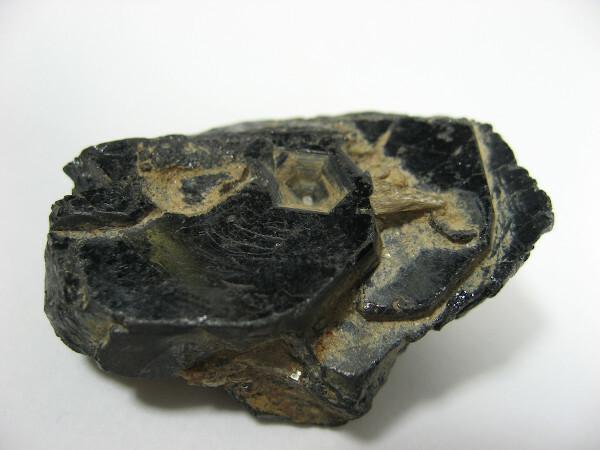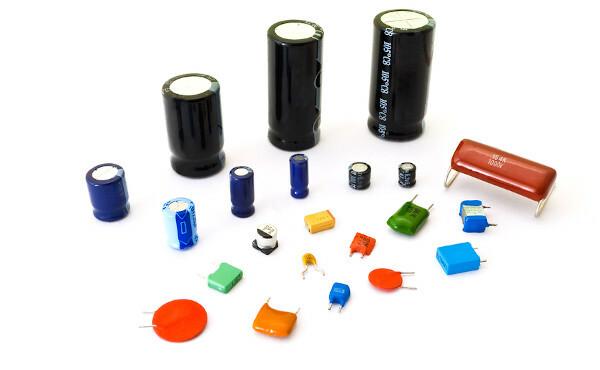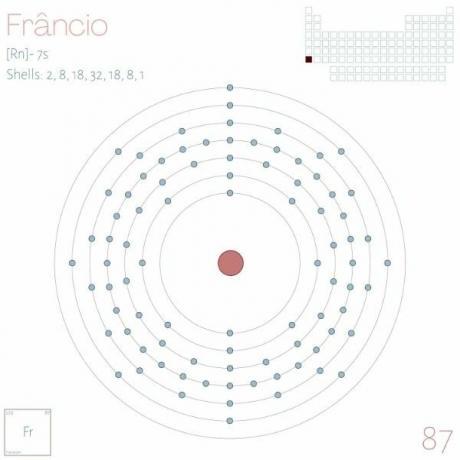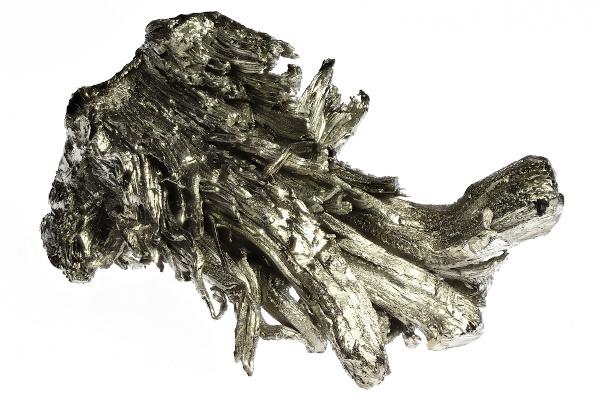O tantalum is a group 5 metal of the Periodic Table, atomic number 73. It has a great chemical similarity to the niobium (Nb), element just above in its group. The similarity is so great that, for six decades, it was believed that they were the same element.
It stands out for its great chemical inertia, mechanical resistance, in addition to its high melting point (the third highest among the metals of Periodic table). Tantalum oxide stands out because of its excellent electrical properties (its capacitance, specifically).
Such properties make tantalum widely used in the manufacture of metal alloys, telephone capacitors, cell phones and other electronic devices, high temperature ovens, as well as prostheses and other equipment surgical. Its compounds are used in various sectors of the industry, such as aerospace, automotive, electronics, among others.
See too: Dubnium — element of group 5 that is below tantalum in the Periodic Table
Summary of Tantalum
- Tantalus is a metal from group 5 of the Periodic Table that shows great chemical similarity with niobium.
- It stands out for its inertia and chemical resistance and high melting point.
- It is commercially extracted from tantalite.
- Its main uses include the manufacture of metal alloys and capacitors.
- Its resemblance to niobium is so great that for more than six decades it was believed to be the same element.
Do not stop now... There's more after the ad ;)
Tantalum properties
- Symbol: OK.
- Atomic number: 73.
- Atomic mass: 180,948 c.u.s.
- Fusion point: 3017°C.
- Boiling point: 5425°C.
- Eletronic distribution: [Xe] 4f14 6s2 5d3.
- Electronegativity: 1,5.
- Density: 16.69 g.cm-3 (close to 25°C).
- Chemical series: transition metal; group 5.
Tantalum characteristics
The characteristics of tantalum are similar to those of niobium. An example of this is the fact that they react with oxygen gas and halogens at high temperature, in addition to reacting with most of the nonmetals.
- 4 Ta + 5 O2 → 2 Ta2O5
- 2 Ta + 5 X2 → 2 Tax5, with X = F, Cl, Br, I
Tantalum presents good corrosion resistance, which results from the formation of a thin layer of oxide on the metallic surface that insulates the atoms internal to oxidative attack. The element is also practically chemically inert, as well as the attack of acids, with the exception of:
- sulfuric acid;
- hydrofluoric acid.
presents the third highest melting point among metals of the Periodic Table, second only to tungsten and rhenium. In addition, tantalum compounds, for the most part, present the metal with oxidation state equal to +5 and with predominantly covalent characteristics.
Also know:Yttrium — rare earth metal used in laser manufacturing
Occurrence and obtaining of tantalum
With an estimated abundance of 1.7 ppm (parts per million, mg.kg-1) at Earth's crust and about 0.002 ppb (parts per billion, mg.t-1) in sea water, tantalum is a metallic element relatively rare in planet.

Tantalum and its similar niobium occur concomitantly in the mineral columbite, (Fe, Mn)(Nb, Ta)2O6. However, when columbite has a higher content of tantalum, it is called tantalite.
THE Tantalum is obtained through the use of bases fused, which can dissolve Nb2O5 and ta2O5. If the resulting melt is dissolved in water, niobium salts can be separated from the tantalum salts, as the tantalum salts precipitate in pH higher (in the range of 10).
Another way of obtaining tantalum from the mixture of Nb oxides2O5 and ta2O5 on a cast basis is through the taking advantage of its greater basicity. In this situation, use a solution water with controlled concentration of HF and KF, forming K2(NbOF5) and K2(TaF7), the former being more soluble in water than the latter.
Tantalum applications
The first uses of tantalum took place at the beginning of the 20th century, through new extraction and purification techniques. In 1905, for example, engineers working for Ernst Werner von Siemens designed light bulbs incandescent using tantalum filaments, in an attempt to replace the fragile filaments of carbon used until then.
However, shortly afterwards, in 1909, tantalum was replaced by tungsten, the metal with the highest melting point in the Periodic Table, thus reducing industrial demand for it.

The resumption of tantalum exploration came with the alloy manufacturing, such as Ta-Ni (tantal-nickel), which are very resistant to corrosion, being used in the jewelry industry. In addition, they are applied to:
- machining tools;
- chemical laboratory equipment;
- radio valves.
These alloys are used in industryat automotive and aerospace to produce turbines and engine components, for example. Tantalum is also used for glass manufacturing with refractive indices specials, which are used for the production of lightweight cameras.
However, the greatest use of tantalum occurs through tantalum oxide, Ta2O5, due to its high capacitance, in the production of capacitors. These electronic devices have the ability to store electrical charges inside, discharging large amounts of electricity to the circuit, which is very useful in appliances that require large intensities of chain.

Tantalum capacitors have the advantage of being smaller, offering a certain capacitance (magnitude that measures the amount of charge that can be stored) in a smaller volumetric unit than capacitors traditional.
This is essential for the optimization and minimization of the electrical circuit, as the demand for smaller and portable components is increasing. In addition, they have low leakage current, greater stability and longer service life. However, they have a higher cost.
Know more: Cobalt — an element that has magnetic properties similar to iron
Precautions with Tantalum
This metal usually presents no problems to humans.
- Tantalum and its main compounds are not classified as carcinogens.
- Tantalum salts are non-toxic as they are poorly absorbed and easily eliminated.
- The inertia of tantalum allows it to be used even as a prosthesis in humans.
Tantalum history
Tantalum was initially extracted from mineral samples by Swedish chemist Anders Ekeberg, in 1802. Due to its great resistance to acidic solutions, Ekeberg named the element tantalum, in reference to the king of Greek mythology Tantalus, known for his suffering.
King Tantalus, the only mortal who sat at the table of the Olympian gods, was punished by the gods for being ambitious. He was sent to Tartarus (the underworld), where there was a valley full of vegetation, food, and water.
However, as part of the punishment, King Tantalus was sentenced to be unable to quench his hunger or thirst, as at the When approaching the water, it drained, and when approaching the trees, the branches were removed from its reach by the wind.

because of their similarities with niobium, it was believed that this and tantalum were the same element. This went on for six decades, and niobium was then called columbium, discovered in 1801 by Charles Hatchett.
In 1844, the German Heinrich Rose even claimed that tantalite contained, in addition to tantalum, two other metals, which were called by him niobium (in reference to Niobe, daughter of Tantalus) and pelopio (in reference to Pelops, son of Tantalum). Rose, without realizing it, made the rediscovery of columbium carried out by Hatchett, however, called it niobium.
Later, in 1847, the chemist R. Hermann said he had discovered yet another element similar to tantalum, niobium and pelopium, calling it ilmenium, in reference to the Ilmensky Mountains in Russia.
However, in 1868, at last, the Swiss scientist Jean Charles Galissard Marignac he managed to separate niobium and tantalum. From a mixture of tantalum and niobium oxides, Marignac obtained the fluorides of these compounds.
Exploring the different solubilities of both, Marignac disaggregated them. Another scientist who contributed to the separation of the two elements was the Swedish Christian Wilhelm Blomstrand, when he identified a new chloride of niobium.
Thus, British chemist Henry Enfield Roscoe concluded that both Marignac and Blomstrand were able to prove that in tantalite there were only two metals: tantalum and niobium, while the other proposed metals were nothing more than simple mixtures of both in different proportions that could also contain other elements, such as tungsten, titanium and iron. The name columbium remained as an alternative to niobium until the 1950s.
Solved exercises on tantalum
question 1
(Enem 2018) In Greek mythology, Niobia was the daughter of Tantalus, two characters known for suffering. The chemical element with atomic number (Z) equal to 41 has chemical and physical properties so similar to those of the element with atomic number 73 that they have been confused. Therefore, in honor of these two characters from Greek mythology, these elements were given the names of niobium (Z = 41) and tantalum (Z = 73). These two chemical elements acquired great economic importance in metallurgy, in the production of superconductors and in other applications in the high-end industry, precisely for the chemical and physical properties common to both.
KEAN, S. The Disappearing Spoon: and Other True Stories of Madness, Love and Death from Chemical Elements. Rio de Janeiro: Zahar, 2011 (adapted).
The economic and technological importance of these elements, due to the similarity of their chemical and physical properties, is due to the
A) have electrons in the f sublevel.
B) be elements of internal transition.
C) belong to the same group on the periodic table.
D) have their outermost electrons at levels 4 and 5, respectively.
E) be located in the alkaline earth and alkaline family, respectively.
Resolution:
Alternative C
The confusion between niobium and tantalum occurs because of the great similarity of their chemical properties. In Qchemistry, the similarity between elements can be explained by the fact that they belong to the same group in the Periodic Table. Mendeleev even grouped them taking into account the similarity of chemical and physical properties.
question 2
Tantalum can be extracted from a mineral called tantalite, whose composition can vary. One of the possible compositions is that of iron II oxide and tantalum, FeTa2O6.
In the demonstrated composition of tantalite, the oxidation number of tantalum is:
A) +2
B) +3
C) +5
D) +10
E) +12
Resolution:
Alternative C
The Roman numeral II in the nomenclature indicates that the iron, in this compound, has an oxidation number of +2. In oxides, the oxygen It has an oxidation number of -2. Thus, the oxidation number of tantalum can be calculated as follows:
+2 + 2x + 6 (-2) = 0
We consider x the oxidation number of tantalum. Thus, the equation is set to zero, since the oxide in question is electrically neutral, not being a ion.
Solving the equation, we have:
2x + 2 - 12 = 0
2x - 10 = 0
2x = 10
x = +5
Tantalum, like niobium, acquires this oxidation number in most of its compounds.
By Stefano Araújo Novais
Chemistry teacher



